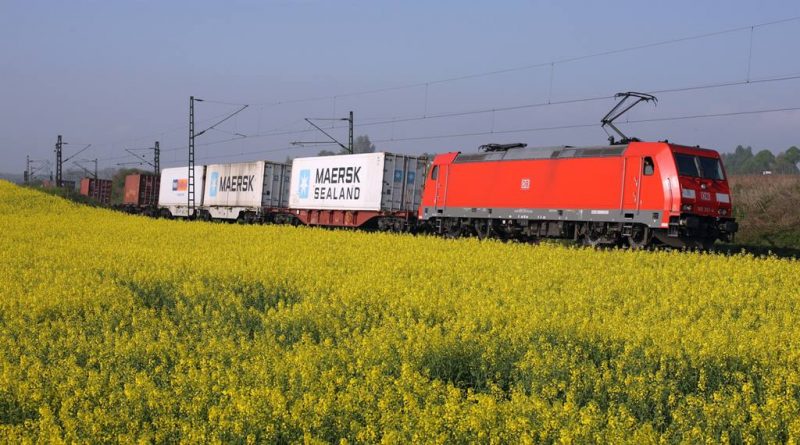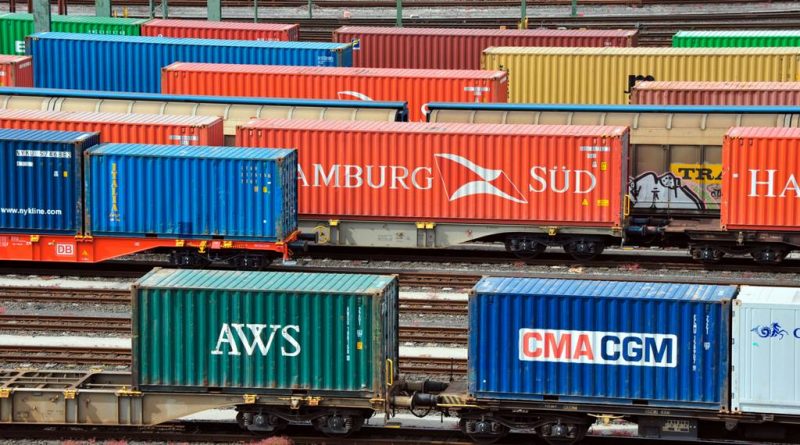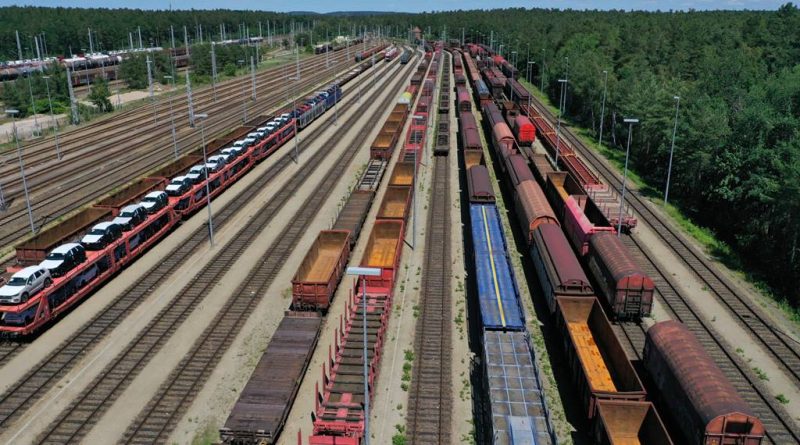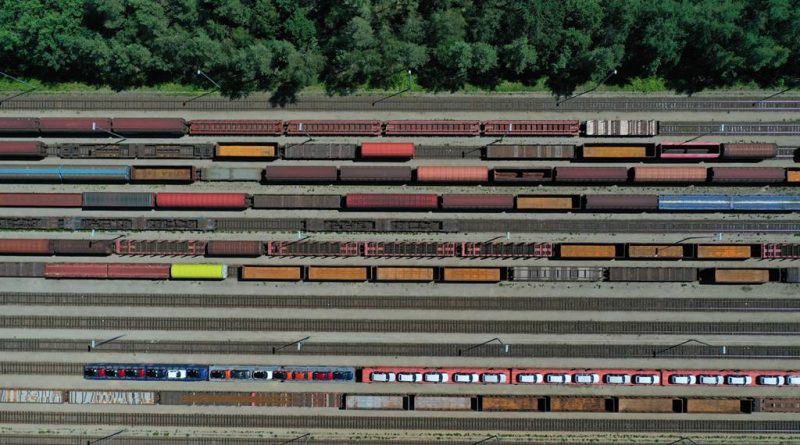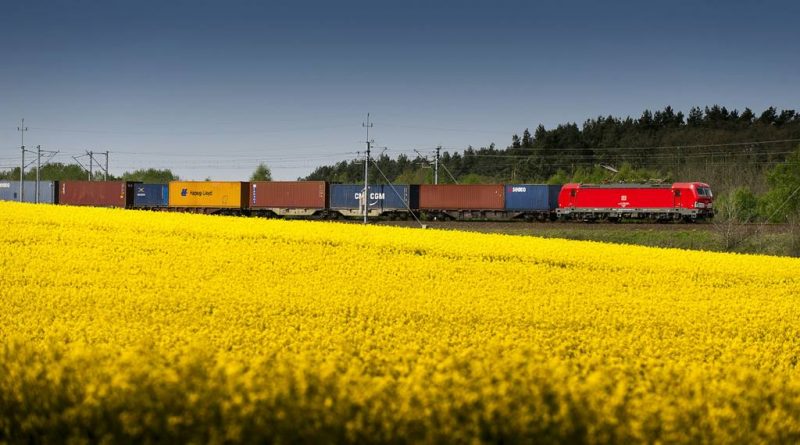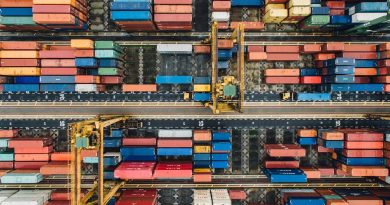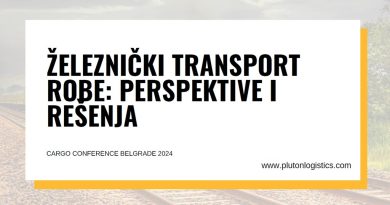EXCLUSIVE INTERVIEW, DB Cargo: We are closely following the new investments in the Serbian intermodal sector
Even though we are all looking forward to the moment when the interviews will once again take place face to face, the new work methods (which have been in use for almost a year) have established some good practices – especially when we talk about opportunities to talk to representatives of global companies.
One such company is DB Cargo – the leading European freight railway company. The PlutonLogistics portal recently spoke to the Head of DB Rail Services Serbia, Ljiljana Ivanovic, and the Head of International Sales of DB Cargo, Maarten de Ridder. Some of the topics we discussed include the role of the railway as a fighter against climate change, traffic to China, the development of the region of Southeast Europe, and new opportunities that open up to new projects in Serbia.
DB Cargo AG is a freight railway company with the largest international presence, and their network today extends from Lisbon, through Nizhny Novgorod in Russia to distant Shenyang in China.
PL: The rail transport seems to be in focus today more than ever. Can you compare the rail freight market in Central and Southeast Europe?
de Ridder: Rail freight transport is the simplest measure for climate protection. One freight train replaces 52 trucks, and each ton transported by rail saves 80 percent CO2 compared to trucks. And it is also a reliable backbone of the economy, as can be seen in Corona times in particular. Rail freight has a superior and unrivaled environmental record. That is why rail freight transport must grow. We at DB Cargo have made this our mission. By 2030, we want to take 25 million trucks off German roads every year. But a lot remains to do.
In Serbia for example, the share of rail transport has fallen below 40% according to the official transport statistics in comparison with the rising road transport.
I believe that there are two points to be considered. First, the economic and industrial structure of the region has changed significantly during the last decades. We have to re-engineer our product and services portfolio to be able to gain new market segments. And second, the railway operators have still some homework to do, especially in increasing our efficiency and flexibility.
This is the reason that DB Cargo is investing in Southeast Europe and has been present with its production companies in Hungary, Romania, and Bulgaria for more than 25 years. We are growing our international network and introducing new rail services between Southeast and Western Europe. For example, we are running a single wagon system in Romania with our own production company DB Cargo Romania. And in 2019, we have connected Serbia with our Italian network via Slovenia. DB Cargo is operating an extensive single wagon network in Italy with 7 hubs, 10 rail ports, and more than 70 destinations that can be reached via shunting station Cervignano.
Since Italy is an important export market for the Serbian economy, we are looking forward to growing the volumes on this corridor.

PL: In your opinion, what are the most important steps that need to be taken in order for railway transport to develop more intensively in Southeast Europe?
de Ridder: The railway sector in Southeast Europe is facing similar structural issues as in any other European region but is at the same time affected by a backlog caused by delayed investments in the last decade. The steps taken in Serbia to improve the railway infrastructure are the right ones and allow us to consider and use the Serbian transport route more intensively.
But there is more than only one measure necessary to improve the competitiveness of a transport mode. Besides the proper infrastructure, there is always a need for new technologies and services on the market to provide the proper solutions for the customers.
For example, in 2020, we connected more than 1200 customers to our new link2rail digital portal. With this service, our customers can conveniently order, process, and monitor their shipments via the portal. The larger our direct rail network becomes, the more markets and regions will be added to the portal, and more international customers will be able to use the service.
PL: How engaged is DB Cargo in Serbia today? How are you present in our country? What would you point out as important items in your business in the past and this year, on the market of Serbia and the region?
Ivanovic: We are working very closely with many Serbian forwarding companies and railway undertakings, as well as logistics companies and terminal operators. The rail freight market in Serbia has gained on dynamics and will provide new possibilities in conventional and intermodal transport. In addition to the long-standing cooperation with Srbija Kargo, other traction providers and terminal operators invest significant efforts in increasing their capacities and product portfolio, which improves the attractiveness of the Serbian transport route.
The fact that we have our own productional companies working in Hungary, Romania, and Bulgaria, is influencing our regional strategy and increasing the importance of the Serbian market for DB Cargo. Besides the transports to and from Western Europe, we are looking very closely at the possibilities within the Western Balkan Region and the cross-border logistics between Serbia and the neighboring countries.
We were able to grow our transports with the Serbian companies in the last year, by running trains from the Serbian border to Germany, Poland, Bulgaria, and Italy even if the economic situation was not favorable.
This shows that the decision to strengthen our office in Belgrade was correct and that being close to our customers will remain an important feature in the digital post-corona period.

PL: In your opinion, what must be done in order to expect a significant increase in the modal share of rail transport in Serbia? How much does your current infrastructure work affect your business?
Ivanovic: Infrastructure development is a key driver to improve the competitiveness of rail freight transport. Better infrastructure does not only influence the utilization rate of our resources and by that the productional costs, but especially the quality of our services. Of course, the infrastructural works have caused temporary bottlenecks and required intense operational coordination, but considering the scope of the works, the disturbances remained reasonably limited.
Besides the improvement of the main lines and corridors, the development of the Serbian regional lines should not be forgotten. Considering the potential in the segment of single wagon (or wagon group) transportation, one must ensure the proper conditions also on the secondary lines. Of course, the reduction of railway stations, industrial sidings, and reloading places is not only a Serbian phenomenon. Every country is currently making a political decision on which way and how much one is ready to invest in the railway sector. But for sure the modal split will not improve if the rail services and infrastructure capacities are further reduced.
Therefore, we are closely following the new private investments in the Serbian intermodal sector. Announcements and concrete projects for expanding the existing intermodal terminals and establish new ones are a promising sign.
PL: Although our pace is much slower, Serbia has shown in recent months that it is following the European and world trend toward intermodal transport. The long-awaited construction of the intermodal terminal in Batajnica has begun, several private companies are developing their complexes … How do you see the potentials and opportunities for the development of this segment?
Ivanovic: Even if you say that the pace is slower, you must at the same time say that the trend is very clear. The intermodal transport volume is growing yearly. Of course, it depends on the availability of the terminal infrastructure, the number of services from the maritime ports to Serbia, and the shipping line policies where and how often they call the ports.
But the increased importance of intermodal transport is undisputed. Especially because the internationalization of the Serbian economy is changing and growing, it is in the need of effective logistic channels that can be provided by intermodal logistics companies.
PL: Can you give us a brief overview of the global business of DB Cargo in the year 2020 during which we have all lived and worked in completely unimaginable circumstances? What are the most important global projects that DB Cargo has realized, and what will be the focus in 2021?
de Ridder: 2020 was an outstanding year, for all of us. However, we have taken on the challenges of this global crisis and shown what we can do. With robust supply chains, with special trains full of relief goods from China or to Italy. And we have also shown to the end that we can organize rail freight transport in the event of short-term border closures in such a way that border controls do not cause congestion on the railways. Added to this is the increased environmental awareness, but not only since the pandemic: Sustainability counts! Customers are taking a closer look at their consumption. Thanks to climate-friendly rail logistics, we have every opportunity to do so.
And we will: Europe needs a strong rail logistics company. This is our new guiding principle – for the climate and a sustainable economy. We have a pan-European network for climate-friendly transport by rail from Europe to China. We have the backbone of logistics solutions in Germany with single-wagon transport. We will expand these strengths.
And the focus is on the customer’s logistics chain. As DB Cargo, we want to and will serve this chain from start to finish. Tailor-made and sustainable logistics solutions that improve our customers’ carbon footprint – that is our goal.
PL: Tell us a bit more about DB Cargo’s plans for our region, where will the emphasis be placed in the coming period?
Ivanovic: We will continue to develop and improve our international network. We will focus this year on the Southeast corridor – one of 13 European corridors that DB Cargo has defined as the core network corridors. Our objective is to improve our operative performance and the quality of our services. We will improve the punctuality of train services and availability of information, reduce transport times, strengthen the operational coordination and ensure necessary resources for that. We will optimize the productional coordination along the corridor and the interfaces with our partners in the region. Shortly – we want to be a reliable and flexible cooperation partner, whenever there is a need to move international cargo from and to Serbia.
“Long-term growth depends also on further geopolitical developments”
PL: Rail transport on the Europe-China route has recorded impressive results this year. Do you expect this trend to continue?
de Ridder: The market has grown tremendously over the years. In 2008 DB Cargo Eurasia GmbH operated the first train from Xiangtang (China) to Hamburg (Germany), and since 2011, it runs regular block trains between China and Europe. Train transportation being a niche product has been made affordable for almost everyone by the great initiative “One belt, One Road”. The product is very attractive because it connects continents and networks. It’s faster than sea cargo and cheaper than air cargo.
After initially 17 trains in 2011, the entire market grew to 12.400 trains in 2020. Even forecasts of Chinese Railways in 2015 assumed only 5.000 trains in 2020. This number was almost tripled.
Although the pandemic played no small role here, we are still talking about a rapidly changing and growing market. We as DB have grown strongly on the corridor and have been able to significantly increase our share since the establishment of DB Cargo Eurasia in 2018.
It is difficult to estimate further long-term growth for the next few years. This depends, for example, not only on further economic development but also on further geopolitical developments. The fact is that China wants to continue developing the Central Asian market, and the expansion of the transport corridor plays a decisive role in this. The most important growth drivers are the investments in the corridor and the associated expansion of the infrastructure so that enough capacities are secured for a continued increase in demand for this product.
PL: One of the announcements that recently arrived from the top of DB Cargo, is the interest in shipping dangerous goods to China, which is not possible at the moment, and would be of great importance for various industries. Why would lifting these restrictions be significant?
de Ridder: Until now, the Chinese government has had a firm stance on this issue. The risks are too high and the stakes too low, so it seems. Over the years, many have tried to influence this policy. It is not certain if something will change in 2021, but if there is one thing DB Cargo Eurasia GmbH wishes for in 2021, it is the permission to transport dangerous goods through China by rail. DB Cargo Eurasia GmbH as the DB operator on the Eurasian Corridor is working hard with various stakeholders to make this happen. The restrictions on the transportation of dangerous goods through China have been a major challenge for various industries. With the growing demand for electric cars, electric bicycles, laptops, or households, there is a growing demand for batteries. This is a booming market, and this market is eager to see the restrictions lifted.
“Transporting Italian pasta in a rail wagon is highly effective”
PL: Stories about transports that are not common for railways (such as, say, transporting wine, fashion items, etc.), always get a lot of attention from our readers. Can you single out any project of this “type” on which DB Cargo has been engaged in the past?
de Ridder: In 2020 we had to learn to adapt much quicker to the changed conditions on the transport market. They were influenced heavily by the corona situation in all European countries. DB Cargo organized and run in a short time additional train services to/from Germany and ensured the undisturbed supply of critical products like chemicals, paper, and foodstuffs.
We proved that transporting Italian pasta in a rail wagon is not only possible but highly effective.
We have developed a nation-wide rail freight network together with Coca-Cola and have set up a long-distance transport between 13 locations, as well as helped to deliver Christmas parcels in Germany with the customer DHL. These examples show that rail transport can be the logistical backbone also in the industries that are usually highly dependent on road transports.
(Author: Milica Milosavljevic)


